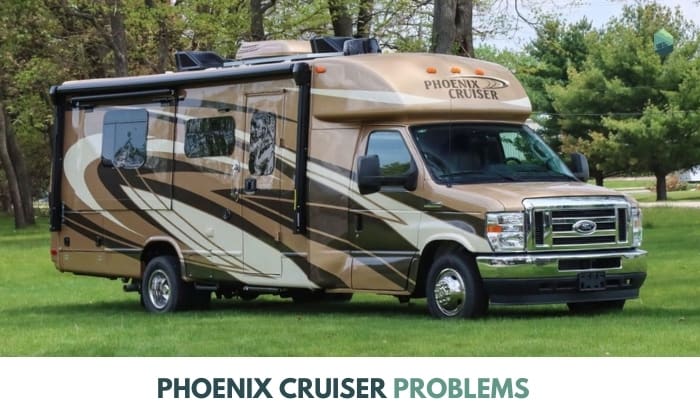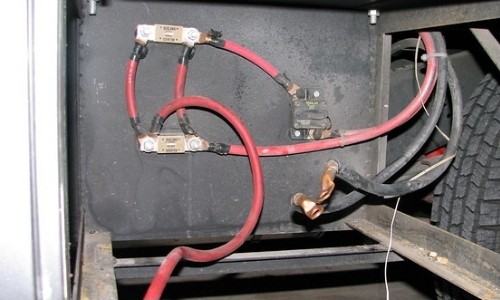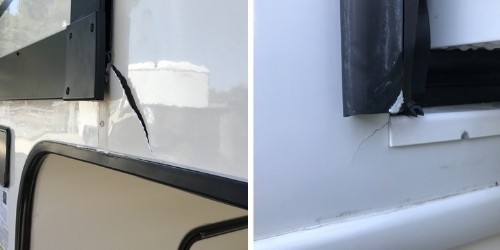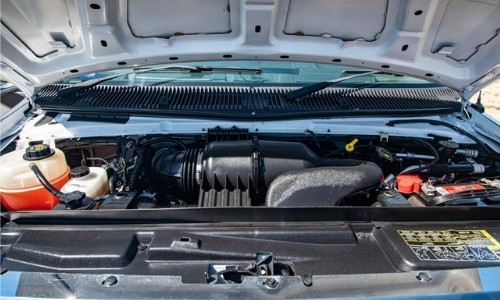Just because it receives favorable reviews doesn’t mean Phoenix Cruiser problems don’t exist. FYI, these units might have electrical problems, water leaks, creaky slide-outs, and engine performance issues.
That only means prospective buyers must inspect and assess potential Phoenix Cruisers. You can start with the following possible issues.
| Phoenix Cruiser Problems | Recommended Solutions |
| Water leaks |
|
| Electrical issues |
|
| Problems with the slide-out |
|
| Engine performance concerns | Follow recommended engine maintenance guidelines |
Page Contents
Phoenix Cruiser RV Issues
A Phoenix Cruiser motorhome can be great for countless family weekend adventures. Knowing the potential issues of such units should help find a reliable unit and take preventative measures if necessary.
1. Water leaks
Regardless of RV brand and type, water leaks are a common complaint among motorhome users. For the Phoenix Cruiser, leaks can stem from faulty connections and valves.
Several owners of the 2017 model on the Phoenix USA RV forum highlighted this issue. They complained that water leaked from the diverter valves, causing the freshwater tank to overfill. Some also mentioned left-side leaks at the RV bottom when hooked to a public utility.
Solution
- Inspect water connections for leaks and tighten them if necessary.
- If tightening fixtures doesn’t solve the problem, replace the connectors or adapters.
- Assess seals and gaskets to ensure they don’t have cracks.
- Check the diverter valve for integrity issues and replace it as needed.
- Consult a Phoenix Cruiser technician if leaks persist.
2. Electrical issues
Electrical complaints aren’t exclusive to Phoenix Cruiser motorhomes. After all, batteries have limited lifespans, and electrical wires are susceptible to breaks.
Generally, electrical devices can get damaged by intermittent power failures. Connection corrosion and surface contamination can also cause electrical issues. Circuit breakers could trip, and fuses might blow.
Although these problems can make RV life inconvenient, their safety implications are more concerning. Electrical fire can turn the Phoenix Cruiser into a charred mess.
Solution
- Check electrical components, devices, systems, and appliances for proper function.
- Inspect battery connections and test charge levels following correct charging procedures. Replace the battery if it no longer holds charge.
- Assess wires and adapters or connectors, ensuring they don’t have signs of damage. Replace if they do.
- Check breakers and fuses. Reactivate tripped breakers or replace blown fuses.
- Have a technician assess, diagnose, and fix the Phoenix Cruiser’s electrical problems.
3. Problems with the slide-out
The Phoenix Cruiser’s long body means more space for a comfortable RV experience. Unfortunately, some owners complain of the side-out hopping and cracking after several operation cycles. A few also noticed leaks in the gasket.
That said, this issue stems from the Lippert Schwintek system, so if your Phoenix Cruiser’s slide-out is made by other brands, you likely will avoid this problem.
Solution
- Park the Phoenix Cruiser on a level and firm ground before activating the slide-out.
- Inspect the slide-out for proper operation, including the motor, extenders, and electrical cables.
- Assess the gasket for potential leaks. Replace it with a sturdier version.
- Check the drip spout and apply a silicone waterproofing agent.
- Replace the Lippert Schwintek system with a more durable option.
4. Concerns about engine performance
Several Phoenix Cruiser owners on IRV2Forums complained about the RV’s engine’s performance, as they noticed a reduced power output and mediocre fuel economy.
However, the problem is more common in 1st-generation models (before 2021). Second-generation Phoenix Cruiser features a new 7.3L powertrain for more heavy-duty use, so it can likely outclass its pre-2021 counterpart.
Solution
- Check the user manual for the recommended engine maintenance schedule (i.e., engine checkups, oil changes, tune-ups, and air filter replacements). Follow the guidelines as diligently as possible.
- Drive the Phoenix Cruiser to the dealer or authorized service center for a more comprehensive engine performance assessment.
Conclusion
Although Phoenix Cruiser problems exist, they are less prevalent than other RV brands of similar type. And if you examine a prospective Phoenix Cruiser as meticulously as possible before buying, you can bring home an RV worthy of admiration.
After all, this Class B/C recreational vehicle has exceptional floor plans, impressive driving and towing features, and enviable liveability. With RV Insider’s official 4.5-star rating, prospective buyers will love the Phoenix Cruiser’s overall quality.

My career journey has been marked by a variety of roles. I served as a Personal Trainer for Children, Fitness Instructor, and Home-Based Consultant in Detroit Wayne Integrated Health Network.
More than ten years of traveling in my caravan have lent me a deep appreciation of freedom. Without the shackles of being tied down to one place, I get to explore many parts of the world and relish the exhilaration that comes with discovering new things. Throughout my journey, I have been a member of FMCA (Family Motor Coach Association) since 2020. Thus, living on the road has never become boring for me.
As someone with a burning passion for traveling, I want to inspire others to adopt a nomad lifestyle to appreciate the beauty of the world. This, of course, requires a functioning vehicle that can always make you feel at home, even when you’re far away from modern life.
Therefore, I seek to put my experience to good use—helping you with your adventure on the road. As a result, I launched and managed the Outdoorbits website, where I likely share my enthusiasm for outdoor activities and health-related insights.



